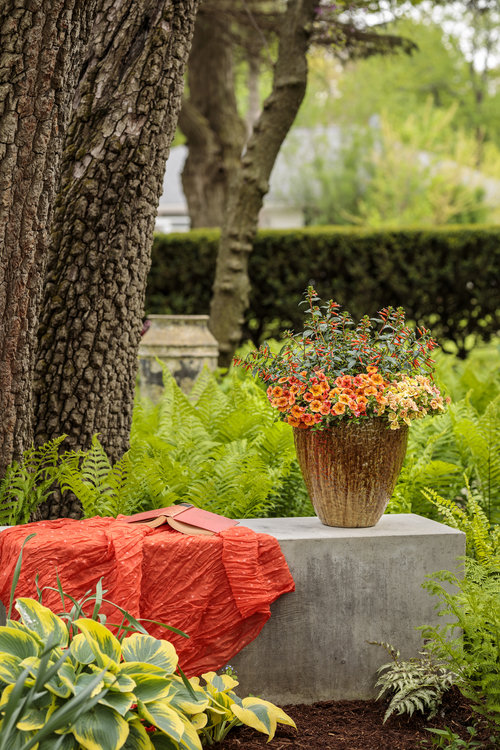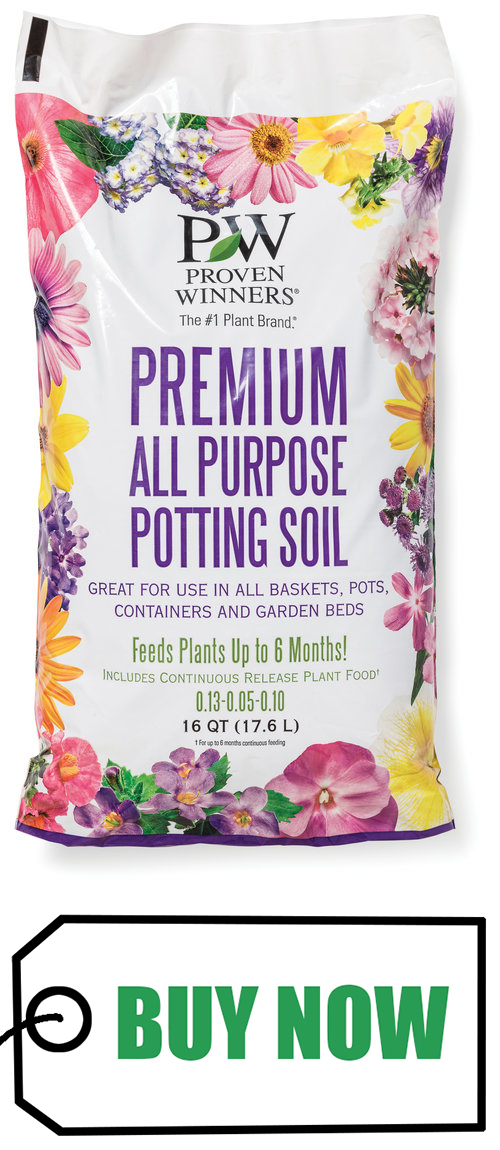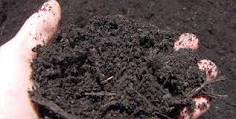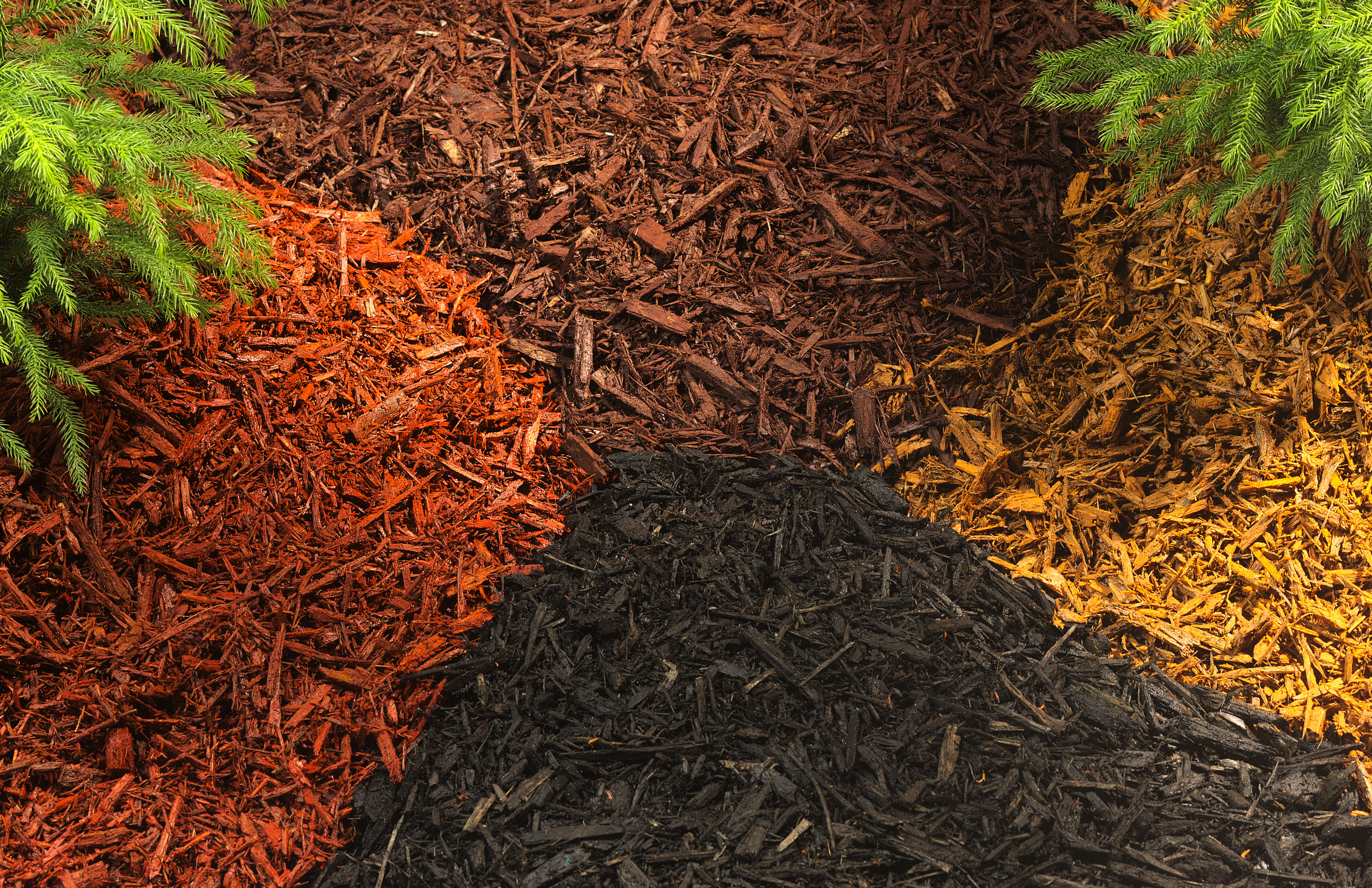Best Potting Soil - The Dirt on Dirt
Using good potting soil is a simple way to get your outdoor container gardens off to a great start.
 |
| Quality potting soil will help your container plants thrive. |
WHAT MAKES A GOOD POTTING SOIL FOR OUTDOOR PLANTS?
Almost any article on plants ends with "and make sure you use a good potting mix" - great advice, but what does it mean? Let’s go over some of the basics and see if we can answer that question. To know what a good potting mix is you kind of need to know what the purpose of a potting mix is, so let’s discuss that first.
The main functions of a potting mix are:
- To retain moisture and nutrients around your plants' roots.
Soil acts as a reservoir for these critical elements of life in your container garden. - To provide enough air for growing roots.
Roots must be able to breathe and not rot once you plant your container. Most people don’t think about this, but it is critical to have a good amount of air in the soil. Not enough and usually the plant roots have a hard time surviving. - To support your plant, providing anchorage for the roots.
A soil mix needs to settle around the roots of your plant and help hold it in place so that it doesn’t blow over from the first wind. However, it also needs to be light enough to allow water and air to always be present under the soil surface so your plant’s roots have a balanced atmosphere to grow in.
So given that a good potting mix does these things, any number of different materials can be used. I know many gardeners use soil from their garden in their pots, some make their own compost and add this to their containers. You can do any of these things, but if you are making your own potting soil at home you will also need to change the way you water and fertilize in order to get the best results. From hydroponics to sewer sludge, there are a million ways to mix up potting soil, however, the potting soil you buy at most garden centers is a simpler blend of some basic items.
 |
| Crowned Best of the Best garden soil by BestReviews.com. |
GENERAL RULES FOR CHOOSING A POTTING SOIL
- Potting soil used in containers should be light and fluffy.
- Look for a potting soil made up of peat moss, pine bark and perlite or vermiculite
- Fertilizer may be added in the form of a "starter charge" or slow release formulation. Adjust your fertilization practices accordingly
- Potting soil may use moisture retaining treatments, watering patterns may need to be altered if you use a potting soil containing these substances.
POTTING SOIL INGREDIENTS
Most potting soil you buy in a garden center are comprised of three basic ingredients: peat moss, pine bark, and either perlite or vermiculite (to provide air space).
Peat moss
Peat moss comes from the peat bogs of the northern United States and Canada; this is usually considered the higher quality type of peat moss. There are some peat bogs in the southern US, but they generally are considered to be slightly lower quality. Peat moss provides a great moisture retaining quality with good air space for healthy growing roots. For acid loving plants, like azaleas or Hydrangeas, this is sometimes the very best potting mix, however, for most flowering annuals peat moss by itself is too acidic. So it is usually best to go with a blended potting mix that has all three ingredients. You can use straight peat moss as your potting mix, but be careful not to overwater. Peat moss all by itself can stay wet for a long time after watering your plants.
NOTE: If you buy a bag of straight peat moss and it is very dry, you may find that it repels water. If you run into this problem, the best thing you can do is soak the peat moss either in the bag you bought it in or in a wheelbarrow or bucket. Usually soaking it overnight will get things well saturated and then it can be easier to use. Once it has been saturated, it will usually go back to retaining water with no further issues.
Pine bark
Pine Bark comes from paper mills all over the United States and Canada and acts to provide some moisture and fertilizer retention, and also a bit more air space. All by itself pine bark does not provide enough of anything to really support plant life (except for possibly orchids, see below under specialty mixes), but once it is mixed with peat moss - pine bark adds a new dimension and helps extend the ‘life’ of the potting mix by being relatively slow to break down.
Perlite & vermiculite
Perlite & Vermiculite are both volcanic in origin and both are put into potting mix to provide additional air space and to lighten things up so a potting mix is not too dense and heavy. Perlite does not provide any nutritional benefit and can collect fluoride if water containing it. That means that flouride concentrates after a while and can burn the leaf tips of some houseplants like Dracaena and spider plant (Chlorophytum). It is rarely a problem with any outdoor flowering plants, so don’t worry if it is in your potting soil unless you are growing these plants. Vermiculite is a bit different in that it holds a lot of moisture and can also hold onto fertilizer for a period of time - helping to keep nutrients around the roots of your plants instead of washing out the bottom of the pot. There are even soil mixes that recycle styrofoam to serve the same purpose as perlite and vermiculite, this is also fine, but eventually the styrofoam rises to the top of the pot and blows in the wind, which can be a bit annoying.
To summarize:
- Peat moss provides moisture and nutrient retention.
- Pine bark provides anchorage, some nutrient and moisture retention and air space.
- Perlite and vermiculite provide most of the air space in the soil.
 |
| According to BestReviews.com, vegetable and herb gardeners will love Proven Winners' Premium All-Purpose Potting Soil. |
POTTING SOIL WITH FERTILIZER
More and more you see bagged potting mix with highlighted improvements on the bag. One of the more common ways potting soil is enhanced is with either a starter charge of fertilizer in the mix or slow release fertilizer mixed into the soil. Both are great ideas and help make things easier for you as a gardener, but there are a couple things you should know.
A “starter charge” of fertilizer means there is a minimal amount of fertilizer in the potting mix, but it is minimal and does not mean you don’t ever need to fertilize. It just means you don’t need to fertilize right away. Most starter charges are gone from the potting soil after watering two to three times. A starter charge can help you a little at planting, but you still need to regularly fertilize as well.
A slow-release fertilizer in the bag means you have more fertilizer incorporated to help your plants transition into their new home, but it rarely lasts beyond the first month. So again, you need to make sure you are regularly fertilizing in addition to the fertilizer in the bag. One problem that we have seen with this slow-release fertilizer is that if the bags of potting mix sit around for a long time or get wet and sit around, the fertilizer in the potting mix releases inside the bag, and then when you plant your flowers they burn up due to too much nitrogen (similar to the problems with using manure products). So if you are buying potting mix with fertilizer added to it, check to make sure the bags are not wet and that the potting mix doesn’t look like it has been sitting around a really long time.
MOISTURE RETAINING TREATMENTS
Like the fertilizer add-ins, a lot of potting mix is beginning to come with moisture-retaining gels and chemicals added as well. Again, this can be a help in reducing watering over the course of the season and there really is no downside to it.
You will need to exercise a little extra care not to overwater your flowers when the temperatures are still cool since the soil will not dry out as quickly as you are used to. You also need to realize that most of these ‘moisture retainers’ will not allow you to leave for three weeks and have everything stay looking good. The water retention of the soil breaks down over the season and by mid to late summer it is likely not doing much anymore. So when you most need water holding ability - when it is really hot - it may no longer be working.
NOTE: Just because the potting mix is moist doesn’t mean the plant won’t need fertilizer, a lot of gardeners live where there is enough rain to keep the potting soil moist, however, you still need to make sure that the plant has regular fertilization to grow well. A plant can starve to death in a moist potting soil, especially if there is a lot of rain washing nutrients out of the soil.
POTTING SOIL VS. GARDEN SOIL, MANURE & MULCH
 It can be really confusing to go to a garden center and try to pick out potting mix when it is mixed in with so many other options. But to keep it simple, just buy a potting mix for your containers (look for a bag that says Soilless Potting Mix); all the other bags are for use in the garden or landscape.
It can be really confusing to go to a garden center and try to pick out potting mix when it is mixed in with so many other options. But to keep it simple, just buy a potting mix for your containers (look for a bag that says Soilless Potting Mix); all the other bags are for use in the garden or landscape.
Garden soil is essentially potting soil with a lot of other heavier and cheaper additives like compost, sand, clay and an assortment of other things depending on the manufacturer. It ‘can’ be used as a potting mix, but you run the risk of it being mucky and pulling away from the sides of the pot when it dries out, in general garden soil is for enriching the garden.
Manure products are great for the outside garden since they are rich in nitrogen, but not so good for pots since all that nitrogen tends to burn up your flowers instead of fertilizing them. Without making this a chemistry lesson, manure products need to be diluted into your landscape at a rate of about one part manure to two parts landscape soil. Using a manure based soil amendment directly on the roots of landscape plants or flowers will usually cause all the roots to burn and actually delay the plant getting a good start in your garden. So use them with care! Also most manure related products contain a LOT of sand, which makes them heavier - too dense for good use in containers.

Mulch is usually a raw wood product (bark, wood chunks, shredded wood, etc.) it is meant to be used on the surface of the soil to help keep water from evaporating, so that garden and landscape plants stay moist longer with less water and fewer weeds. Since they are raw wood products, they don’t work well mixed into your flower pots. Raw wood products suck up all the available nitrogen from the soil as they break down and this means your plants look starved and yellow-green because they can’t get enough food to grow. Keep mulch products on top of the soil in your garden and landscape where they are meant to be. They are great for decreasing water loss and if applied thick enough add some protection from annual weeds.
QUALITY ≠ WEIGHT
A lot of consumers confuse heavy potting soil with good potting soil. In most cases when a bag of potting soil is very heavy there are two reasons for it; it is either water-soaked or it contains a lot of sand. In either case, it isn't a good thing. If a potting soil is soaked it can begin to break down in the bag - losing all its air space, becoming compacted and is at risk for carrying root rot diseases besides being nearly impossible to get into your car. Adding sand to a potting mix is another issue. Unless you are growing cacti, adding sand (which provides anchorage and some air space) is usually not a great idea. In general, sand is added to a potting mix simply because it is a cheap filler. Sand was used instead of more expensive components like peat moss or pine bark. If you live someplace with very high winds, a little sand can help hold plants in place, but in general it is not needed.
FUNGAL GROWTH ON POTTING SOIL
Most prepared soils that are bagged and sold at garden centers and home supply stores have been prepared months in advance of the actual sale. Normally, these mixed soils are composed, sterilized or at least heat-treated to eliminate any diseases, weed seeds and other pathogens that could ultimately impact what you are going to pot and grow in the soil. When you break open the bag and use the mix, you are exposing that sterile soil to a huge assortment of native fungi spores that are ambient in your home and garden. The sterile soil is a perfect home for these fungi (or mildews) since there is no competition for the organic material that makes up the soil mix. These fungi grow fast, especially when given the ideal growing conditions (which seem to be identical to those conditions we want to grow our new spring plants in.) Under normal outdoor growing conditions the fungi are usually short-lived. Drying the soil mix out, exposure to sunlight and simply being exposed to other competitive organisms, the mildews disappear through rapid attrition.
Most of the time, the appearance of these mildews that grow on the soil means absolutely nothing to the health of the plants you are about to plant; other than an indicator that perhaps the soil is too moist or has too much organic material in it. If you want to eliminate the mildew issue, open the bag a few days before you use it and spread it out on a sheet or cloth, expose it to the sunlight, and then re-bag or put it into a soil bin when it is dry. You can use the soil without worry either fresh out of the bag or "conditioned and dried".
SPECIALTY SOILS FOR ORCHIDS & SUCCULENTS
While the basic peat moss, pine bark and perlite type potting mixes will work fine for almost all annual flowers and mixed potted plants, there are some crops for which specialty mixes might be helpful. The most common is potting mix for orchids.
- Orchids require excellent drainage and most general potting soils are too heavy and hold too much water, so if you want to have healthy orchids you may want to purchase a specialty potting mix.
- Also, cacti and succulents require better drainage than annual flowers and in many cases prefer clay pots as well. Many succulent collectors use a regular potting mix and mix it with 50% sand, it makes the mix very heavy, but very fast draining.

MIXING POTTING SOILS
Like all aspects of gardening people succeed doing a lot of things differently and some gardeners really swear by mixing their own potting soils using everything from lawn clippings to fish heads to powdered clay. As long as you adjust your watering and fertilizing to match your mix, plants are pretty forgiving and in some cases do even better with custom mixes, so feel free to experiment.
Have you ever run out of one potting soil in the middle of planting and had to switch to another type of potting soil halfway through a large container? I know I have. If you find yourself in this situation, I have a tip for you. Make sure to blend the two types of potting soil as much as possible. By mixing them together you get an even blend of potting soil and your plants will do better. If you just pour a totally different potting mix on top of a different one and don’t mix them there is the possibility that if the two mixes are different enough your plants will have a hard time growing down through one mix and into the other. There are a lot of reasons for this and rather than making this into a physics lesson, just take my word for it - blend potting soils if you find yourself having to switch in the middle of a container. Your plants will thank you.
Learn more About Soil with these Articles:




